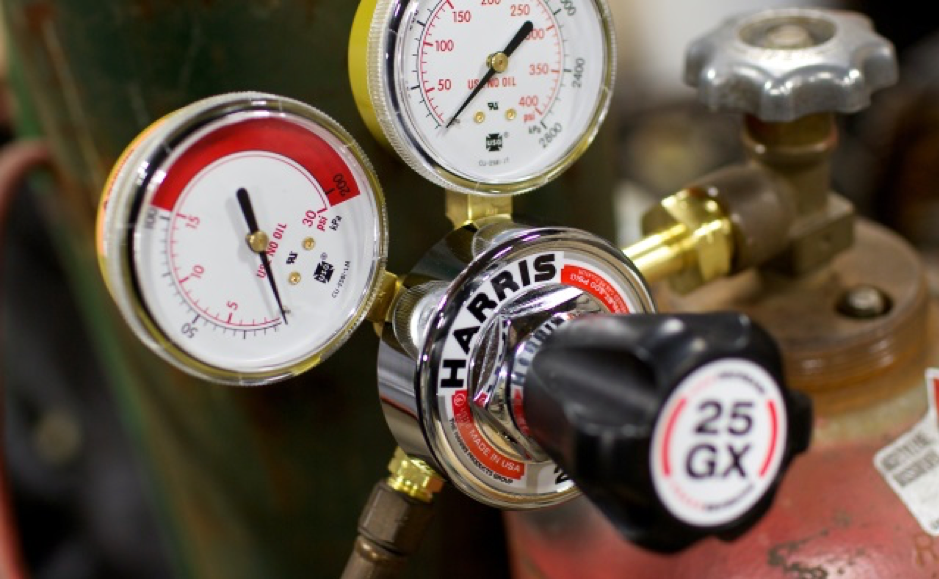
As high pressure gas enters a regulator, it pushes on the seat and the combined pressure of the high pressure gas and the valve spring closes the valve seat. A pressure adjusting device, i.e. an adjusting screw or knob, exerts downward pressure on the diaphragm and valve, opening the seat and allowing gas to pass through. An equilibrium is created between the upward force of the high pressure inlet gas and valve spring and the downward force of the adjusting device, resulting in a constant delivery pressure of the outlet gas.
When the adjusting screw is turned in, thus increasing the downward pressure on the valve, the downward pressure becomes greater than the upward pressure, resulting in the outlet pressure rising until there is an equilibrium again between the upward and downward forces. The same result happens when the inlet pressure decreases. As the inlet pressure from the cylinder decreases, the downward pressure from the adjusting screw becomes greater than the upward pressure from the inlet gas, causing the outlet delivery pressure to rise.
